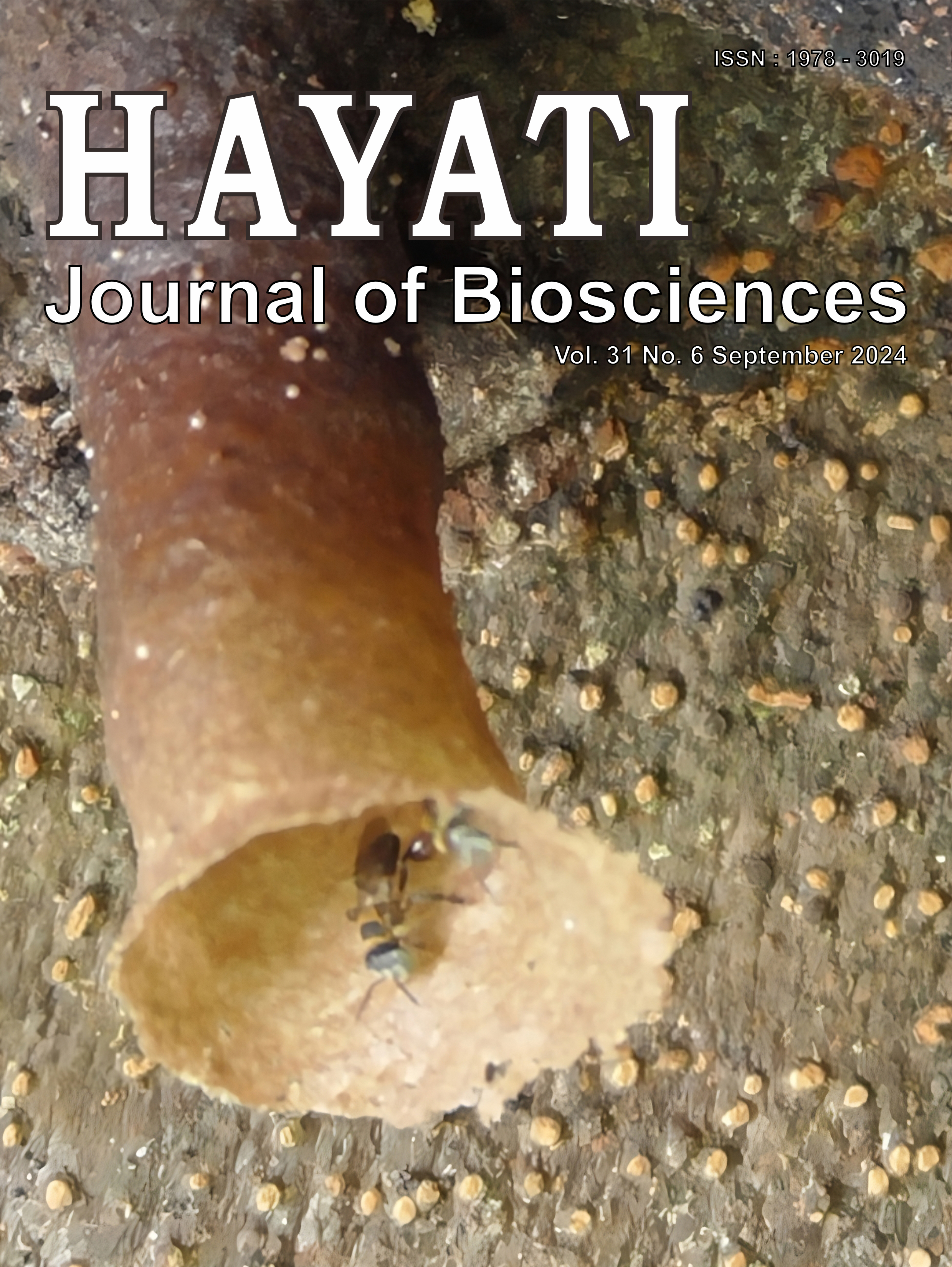Secondary Metabolite Compounds from Alpinia monopleura Extract and Evaluation of Anti-Inflammatory Activity based on In Vitro and In Silico Studies
Abstract
Alpinia monopleura is one of the endemic plants of Sulawesi, and it has an extensive distribution in the region. Research on chemical compounds and biological activities of A. monopleura is essential to continue as an effort to support the utilization of native plants for medicine. The extract was obtained using the maceration method. The chemical compounds in the extract were identified using Liquid Chromatography Mass Spectrometry (LCMS). Bovine Serum Albumin (BSA) and molecular docking methods were used to evaluate the anti-inflammatory activity. Ten compounds contained in the extract were successfully identified, E-para-coumaric acid (1), trans-ferulaldehyde (2), 3,5,6-trihydroxy-4',7-dimethoxyflavone (3), nevadensin (4), malvalic acid (5), ent-16α,17-hydroxy-19-kauranoic acid (6), 3′,5-dihydroxy-7,4'-dimethoxy flavone (7), saurufuran B (8), 5-hydroxy-7,8,2'-trimethoxyflavanone (9) and dehydroabietic acid (10). The anti-inflammatory activity of extracts from rhizomes and stems of A. monopleura were 8.62 and 10.59 mg/L, respectively. Some flavonoids (9 and 7) can bind strongly to specific residues around the COX-2 active site, such as Ser530, thereby interfering with the function of the COX-2 enzyme and reducing the production of pro-inflammatory prostaglandins. Thus, A. monopleura extract has the potential to inhibit inflammatory responses through molecular regulation of the COX-2 enzyme.
Downloads
Copyright (c) 2024 Agung Wibawa Mahatva Yodha, Esti Badia, Musdalipah, Reymon, Yulianti Fauziah, Angriani Fusvita, Arfan, Wahyuni, Sahidin

This work is licensed under a Creative Commons Attribution-NonCommercial 4.0 International License.
HAYATI J Biosci is an open access journal and the article's license is CC-BY-NC. This license lets others distribute, remix, tweak, and build upon author's work, as long as they credit the original creation. Authors retain copyright and grant the journal/publisher non exclusive publishing rights with the work simultaneously licensed under a https://creativecommons.org/

























.png) IPB University
IPB University Department of Biology
Department of Biology The Indonesian Biological Society
The Indonesian Biological Society 

